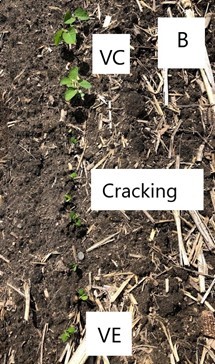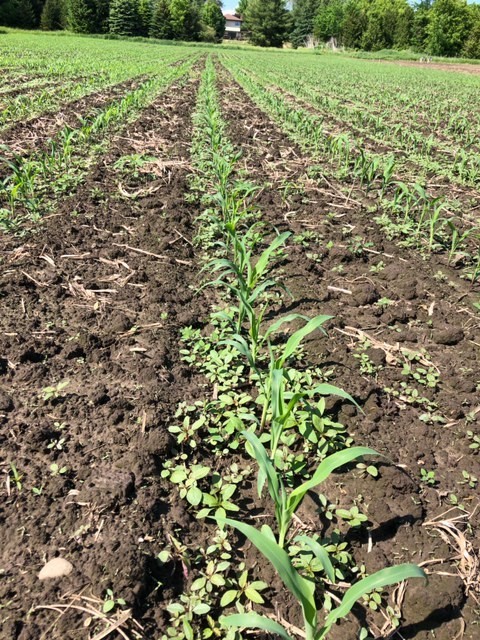Your Local Weekly Ag Partners Agronomic Update.
The one-stop-shop to hearing everything you need to know this week about what is happening in your fields.
This week’s featured agronomists are:
Courtney Wolf – Belle Plaine
Buddy Schaefer – Wanamingo
Casey Carlson – Goodhue
Brett Decker – Lewiston
Luke Daninger- Ellsworth
Scroll down to hear from your local agronomist.
West
Belle Plaine – LeCenter – LeSueur
|
Courtney Wolf |
Well, we have gotten some much needed rain in the past week and looks like more to come. With all this moisture we have really started to see the crops take off in the field. With that, we have seen a bit of uneven emergence and a loss of stand. |
Central
Wanamingo – Kenyon – Morristown – Owatonna
|
Justin Schaefer |
What a difference a week can make! After being very dry for most of the spring, we welcomed some nice shots of rain, with much of the area seeing +3 inches in the last week. The rain was very helpful for a handful of reasons, not just the obvious that yes crops need water and heat to germinate and grow. The moisture helped in assessing stands that were a bit uneven from sitting in dry dirt not too long ago. We now have a pretty good idea on what is going to emerge and what stand counts will be. |
Fortunately, I do not see a lot of replant situations in our area. The rain also helped activate a lot of our pre-emerge bean and early corn herbicide applications that were made. In some cases, these herbicides sat out in the fields for close to a month without much moisture, so while we cannot expect as much help from the chemicals as we have seen in other years, we will still see some reach back and the help we need in getting us to our next applications.
With that being said…the corn I have been looking at has been growing very rapidly now, but so have the weeds. In most cases it will be time to get out there and spray that corn as soon as field conditions allow. Top dressing corn will also be here before we know it!
South
Lewiston
|
Brett Decker |
What a difference some moisture and finally some heat will do to everything. The moisture we received over the last week was very beneficial to all. Besides some severe cold imbibitional chilling we were seeing on the corn we were also losing some plant stand to hard crusting soils in parts of our territory. |
The rotary hoes made an appearance for the first time for a lot of growers before the rain came. With the slow, gentle rain events we saw it was enough in some cases to get another 4-6 thousand plants per acre out of the ground. With the challenging spring being cool and dry along with some early plantings we are seeing up to a 25% reduction in stand counts. Another big advantage we have seen is the difference in emergence scores on hybrids. Those that score slightly lower are showing to be a little slower out of the ground. The growers that patiently waited for early May plantings benefited very nicely with near perfect stands in most cases.
Above the corn to the left has an emergence score of 1 & the corn on the right has an emergence score of 3
We also saw some nice reach back on the early pre-emerge chemistries now that it has rained also. However, some fields are starting to not look so nice as that chemical was applied almost 5 weeks ago and the weeds have gotten ahead of the corn. With the post spray season now in full swing we hope the weather will cooperate.
Alfalfa harvest for the dairies has started this week. With the roller coaster of temperatures that the alfalfa has been through this spring most growers have been pleasantly surprised by the amount of tonnage they are receiving.
East
Pine Island – Cannon Falls -Goodhue -Lake City
|
Casey Carlson |
Cold and Dry Soils in April Result in Lower Corn Stands in May
In the Goodhue area, corn final stand counts are on the lower side then normal. The staff are seeing fields ranging from 24,000 to 33,000 final stands with the average coming in at about 28,000 seeds plants per acre. The cold weather we had during and after planting resulted in some cold shock and reduced vigor. Fields that were spring prepped with a field cultivator/digger are showing significantly higher stands then vertical-till and no-till fields due to soils warming up faster. |
In corn-on-corn fields we saw issues with inconsistent planting depth and poor seed to soil contact that resulted in lower stands. Stand loss will knock off some top end yield. So, a farmer that was managing for 250-bushel corn could expect yields goals expectations dropping to 220 to 240 bushels per acre depending on the hybrid they planted (Flex hybrids will drop less) and their final stand. That is still a good crop and well worth finishing out planned management strategies this summer.
WWAS
Ellsworth
|
Luke Daninger |
Corn is between V1-V3 throughout the region. Soybeans are anywhere from VE to V1. Weeds are really starting to pop in fields with no herbicide down and some fields with really early pre emergence as well. This past week, we started to find some waterhemp here and there as well. Make sure to be on top of spraying and don’t let the weeds get the upper hand |
Waterhemp is starting to emerge
Side dress acres on corn are starting to rock ‘n roll. In Wisconsin, side dress has been worth about 8 bu/ac on average. Some alfalfa was taken off this week before Thursday’s washout rain. The rest will be taken this coming weekend. Don’t forget to replace what was removed on the fertility end and keep potassium, sulfur and boron requirements in check.
















